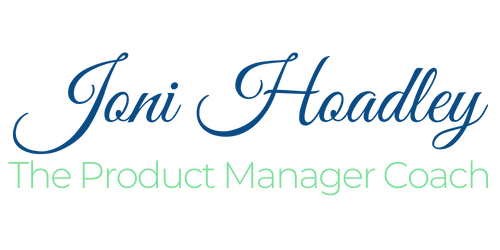Being a product manager requires a balance of assertiveness and diplomacy, particularly in stakeholder management. The art of saying “no” is a critical skill that, when done respectfully and decisively, can significantly contribute to the success of your product and your career. This guide provides a 5-step process for product managers to decline requests while maintaining strong professional relationships gracefully.
Let’s start with a typical situation for product managers:
You fire up Slack and see a DM waiting for you from a salesperson like this. “Can you add [feature A] to your backlog? If we add this extra capability, I’ll finally be able to close that deal with Company X.”
Your stomach flips as you think, “Here we go again,” as you reply, “Hey, thanks for the feedback. Let me take a look, and I’ll get back to you.” Then, you avoid them for as long as possible.
Sound familiar?
Why “No” is a Powerful Tool in Product Management
So many product managers worry about disappointing their stakeholders. They do a little dance around the subject to avoid saying no. By avoiding saying no as a product manager, you risk damaging the success of your product, company, and career. Managing stakeholders is such an important skill to develop.
Steve Jobs once highlighted the significance of focus and selectivity:
“I’m actually as proud of the things we haven’t done as the things I have done. Innovation is saying ‘no’ to 1,000 things.”
Steve Jobs
This quote underscores a crucial aspect of product management: the power of rejection. It is about guiding your team and resources toward what truly matters for the product’s success and your company’s vision.
The reality is that you are juggling finite resources to deliver your product in a timely fashion. You have to make the best decision about what to build (and when you can deliver it) based on your resources.
Not only is it critical to be willing and able to say ‘no,’ but it’s essential to do so quickly and decisively.
Why should you be ruthless about saying no? Because when those requests and ideas sit on a list somewhere without taking any action whatsoever, bad things happen.
When you fail to say no and don’t manage your stakeholders effectively, you lose trust and credibility. These are two essential traits for product managers.
You lose the trust of your stakeholders because they don’t see you as someone who takes their feedback seriously.
You lose credibility with your team because they see you tossing more ideas onto the backlog without vetting them.
Your boss loses faith in you because stakeholders ask her why you haven’t done anything with their idea.
Let’s discuss how you can say NO effectively. How do you reject someone respectfully? How do you turn them down without making things awkward or seeming adversarial?
The 5-Step Process to Say “No” as a Product Manager
Step 1: Engage in Meaningful Dialogue with Stakeholders
Start by creating a genuine dialogue with the stakeholder presenting the request. Active listening and understanding their perspective not only build trust but also provide a clearer picture of what’s being asked and its potential impact.
When you are presented with an idea or feature request, spend a few minutes talking (and, more importantly, listening) to the person to understand their idea.
Try not to make assumptions, pay attention, and repeat what they’ve said to show that you are listening.
Actively listening will make them feel heard, building trust and goodwill.
Step 2: Explain Your Prioritization Framework
Use established frameworks like RICE or MoSCoW to explain your decision-making process. This transparency allows stakeholders to see where their request stands regarding priority and strategic fit.
Help stakeholders understand how you and your team make prioritization decisions. If you haven’t already done so, document the framework you use to make product decisions. Examples of common frameworks include RICE and MoSCoW.
Walk them through your process. Show them how their idea fits in using this process. At this point, they may realize that their idea is not viable.
This is an excellent opportunity to reinforce the product strategy and focus areas.
Step 3: Evaluate the Value of the Request
Quantify the value of the request. If it lacks clear benefits or data backing, encourage additional research. Direct stakeholders to resources like my blog series “Metrics: The Good, the Bad, and the Ugly” for more insights.
Ask questions to determine the potential value of their request. Try to quantify the value with actual data. If necessary, suggest you or they do some additional homework to get the data.
If you need help using data effectively, check out this 4-part blog series, “Metrics: The Good, the Bad and the Ugly.”
Step 4: Communicate the Costs and Investments Required
Discuss the resource allocation and potential trade-offs involved in accommodating the request. Often, understanding the associated costs can deter unrealistic proposals.
Help them understand the price associated with their idea. The effort needed to implement those ideas is often enough to help them understand that the concept isn’t viable.
Sometimes, you’ll need to help them understand the things your team would have to stop doing to focus on this idea. Whatever the expense associated with their idea, help them understand the rationale.
Step 5: Deliver Your Decision Firmly but Respectfully (aka, Just say no)
If the first four steps haven’t swayed the stakeholder, it’s time to say “no” firmly but diplomatically. Back your decision with data and align it with the product strategy to reinforce your stance.
This is the hard part, but if you’ve done steps 1-3 correctly, the person making the request will likely realize the futility of their idea on their own.
If they continue to press the idea, use data to support your decision.
Here are some suggestions for how to diplomatically say no:
“Thank you for the idea. Unfortunately, our product roadmap and development schedule are locked in place for the immediate future. I’ll place it in our idea parking lot to revisit it another time.”
“Our research has told us that this type of idea could cause usability/technical feasibility/etc issues. It’s just not something we can do at this time.
“This isn’t aligned with our product strategy and area of focus for the quarter.”
I’ll share one final tip on how to say no. Get in the habit of documenting what you are saying NO to in a place where others can see them. This can be an appendix to your roadmap or a section of a wiki page you’ve created to summarize a new project or set of features you’re working on.
Being transparent about what your team will NOT do and WHY you are saying NO to those things will reduce ambiguity throughout your organization. It will help you build trust and credibility with your team, stakeholders, and boss.
Mastering the art of saying “no” not only protects the product’s vision but is also instrumental in advancing your career as a product manager. By following the outlined 5-step process, you can assertively manage stakeholder expectations and maintain integrity in your role.
Are you looking to sharpen your stakeholder management skills further? Dive deeper into the strategies that make for a successful product manager by subscribing to my newsletter for more insights and updates.

